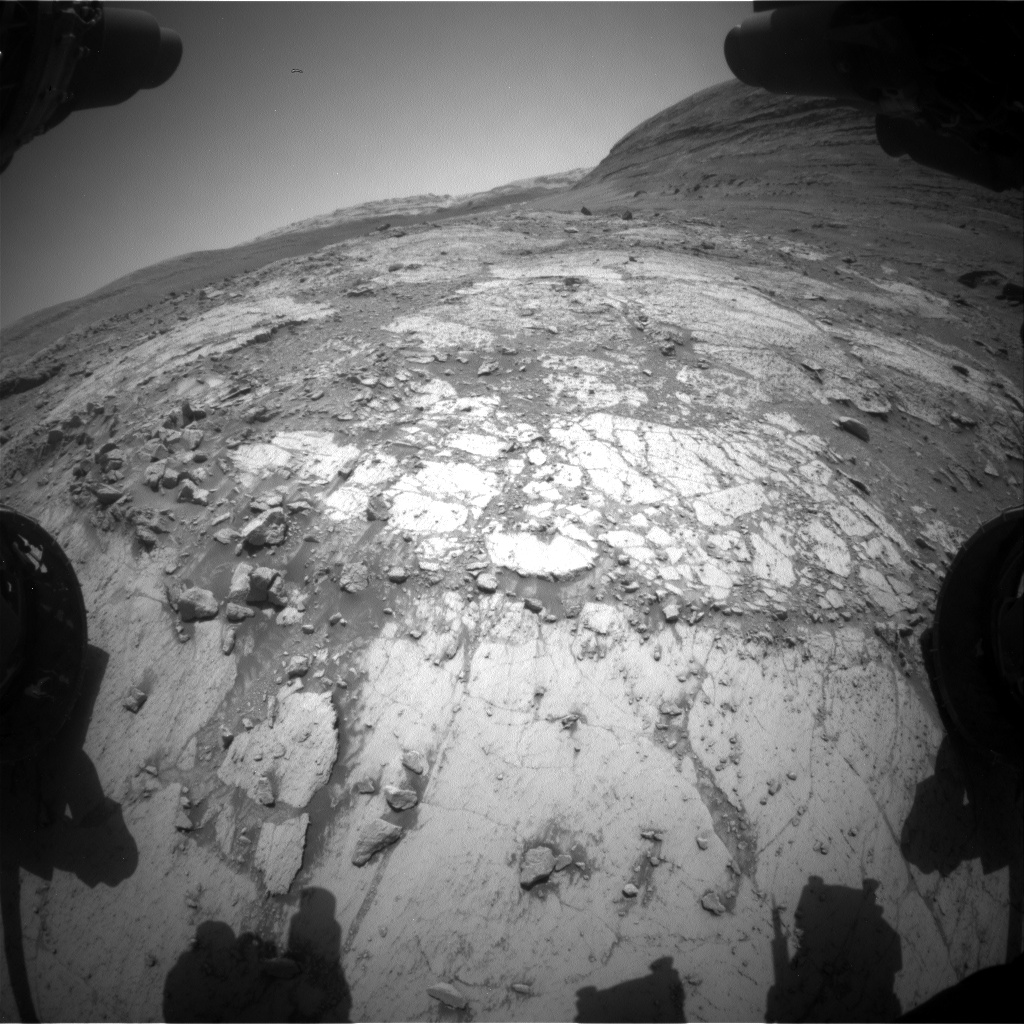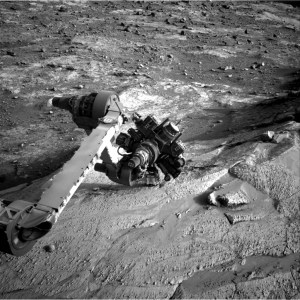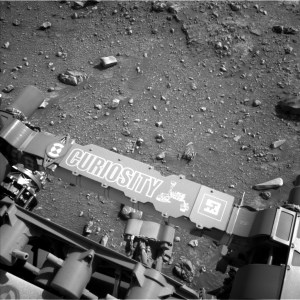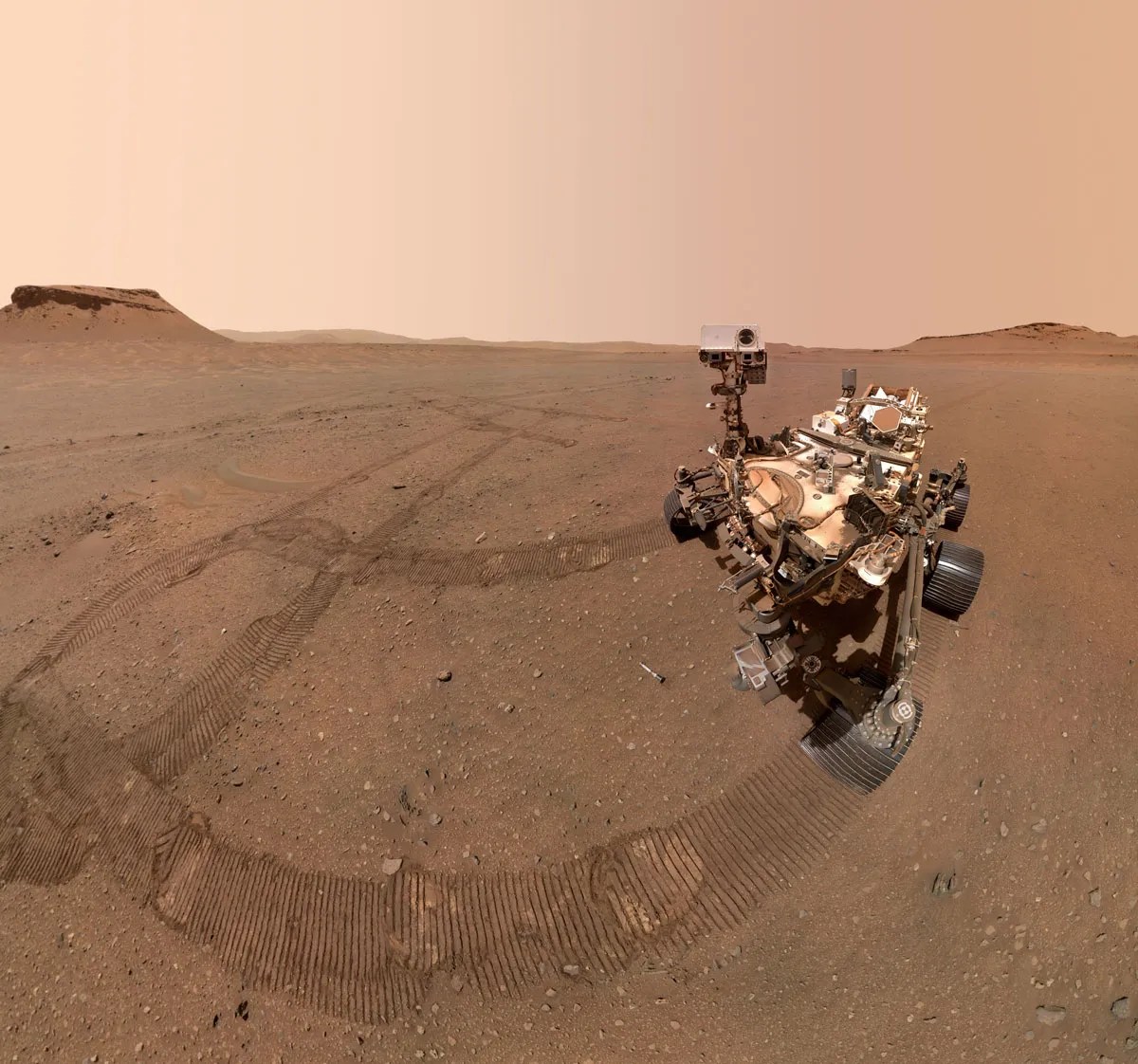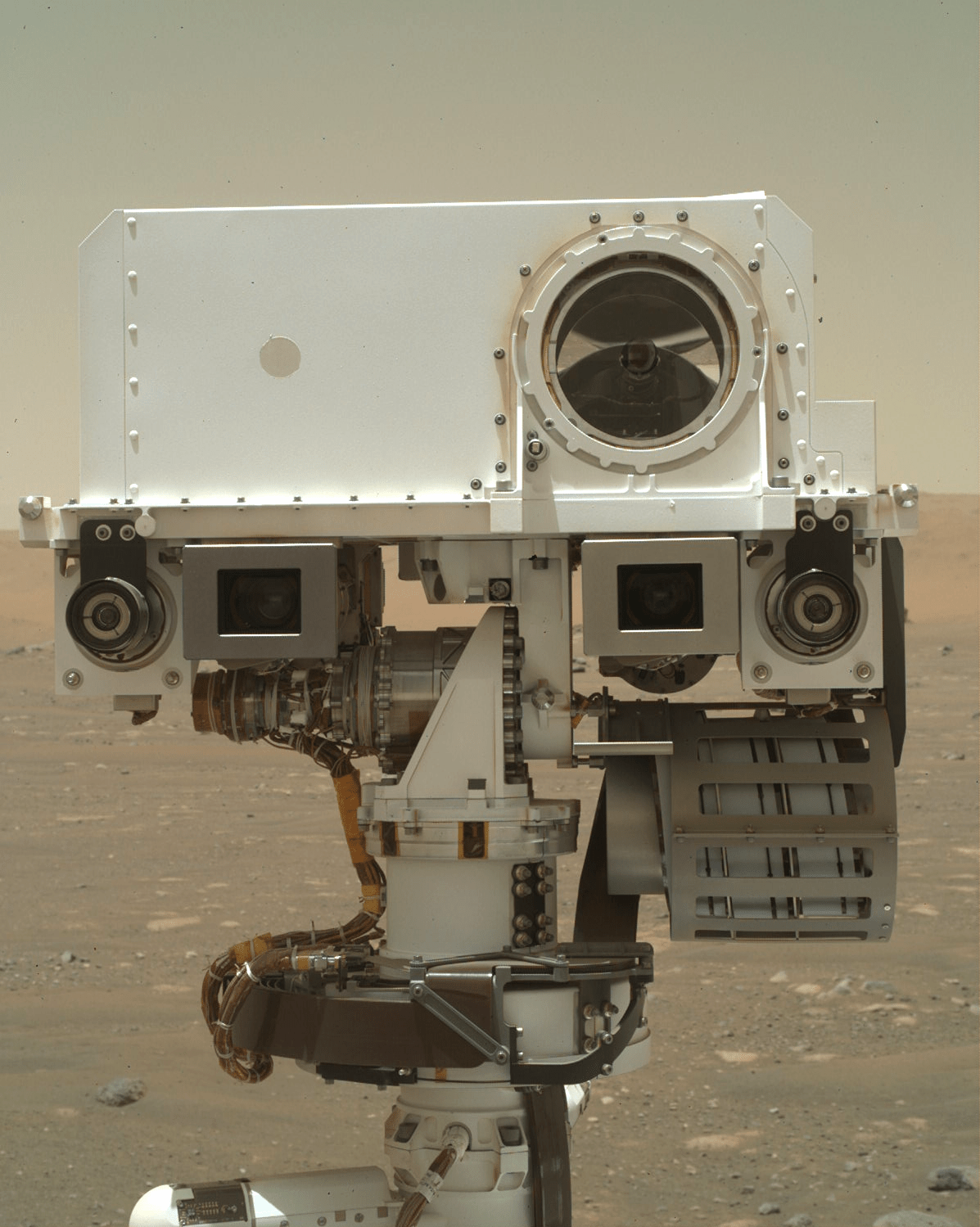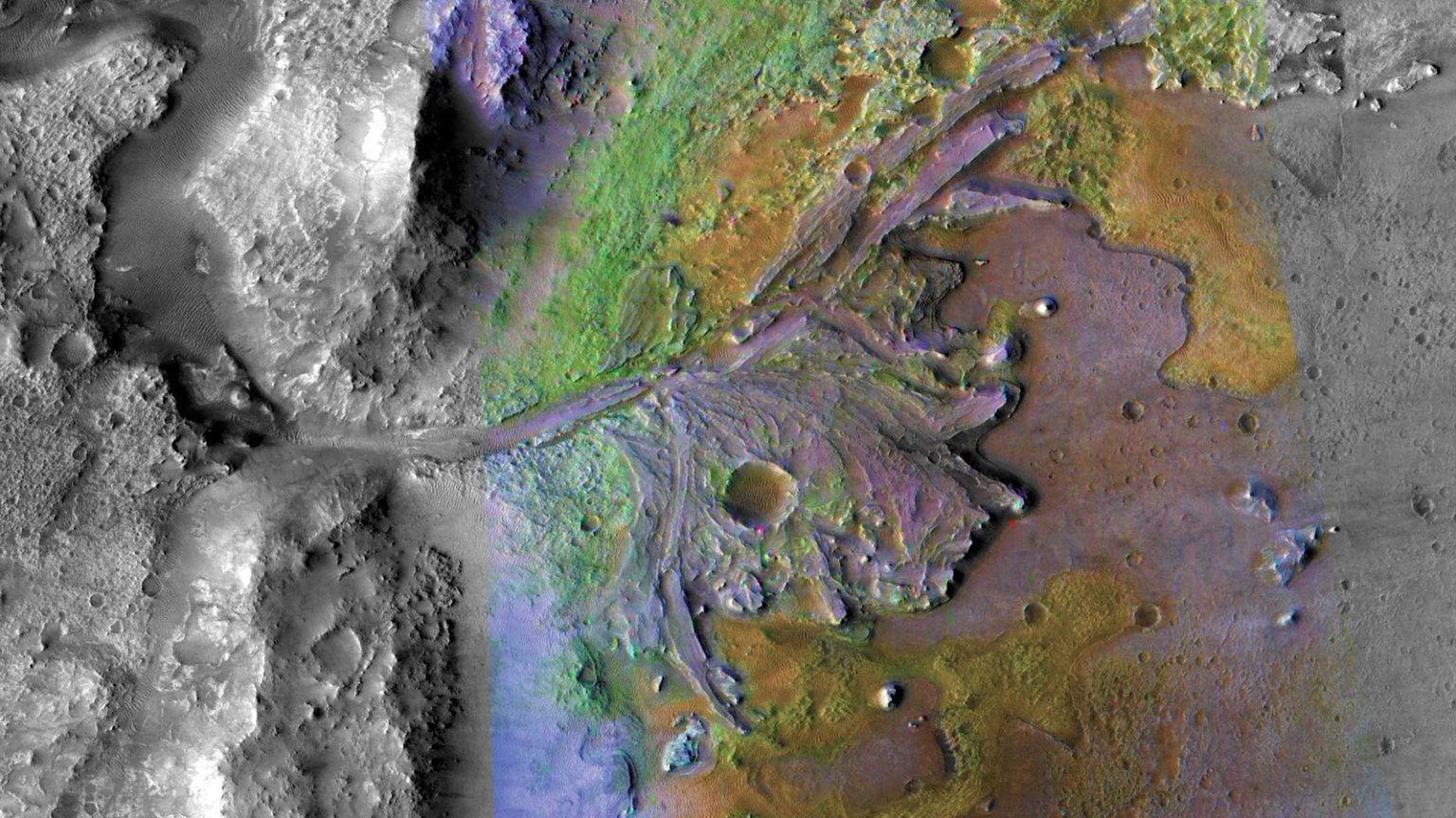
2 min read
Sols 4253-4254: Pit Stop for Contact Science
Earth planning date: Monday, July 22, 2024
Last week we wrapped up activities at Fairview Dome and started heading south towards our next potential drill location in the Upper Gediz Vallis ridge campaign. We had about a 29-meter (about 95 feet) drive over the weekend, which set us up nicely for contact science and remote sensing today.
Today’s two-sol plan includes APXS and MAHLI on a gray rock named “Discovery Pinnacle” to assess variations in bedrock chemistry and compare it to what we have seen recently. We also planned ChemCam LIBS on “Miguel Meadow” to evaluate the typical bedrock in our workspace, as seen in the above image from the front Hazcam. The plan also includes a Mastcam mosaic covering the large patch of light-toned rocks in front of the rover to look for variations in lithology. Two ChemCam long-distance RMIs are also planned to evaluate the stratigraphy exposed by a channel cut into the Gediz Vallis ridge deposit, and to look more closely at a well-laminated dark-toned boulder on the channel floor. Then Curiosity will drive about 16 meters (about 52 feet) farther south, and will take post-drive imaging to help us evaluate another patch of light-toned bedrock in the next plan.
In addition to targeted remote sensing, today’s plan includes observations of atmospheric opacity, searching for dust devils, an autonomously selected ChemCam AEGIS target, and standard DAN and REMS activities.
We’re all curious to see what Wednesday’s workspace will hold as we start thinking about the next place to drill! Meanwhile, much of the science team is gathered in Pasadena, California, this week at the Tenth International Conference on Mars, sharing lots of exciting results from the mission thus far. Looking forward to what comes next!
Written by Lauren Edgar, Planetary Geologist at USGS Astrogeology Science Center

